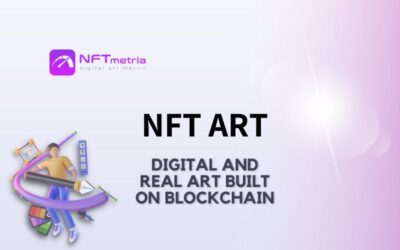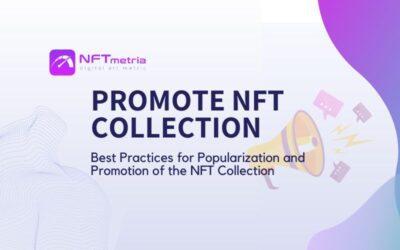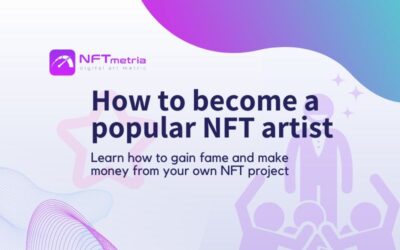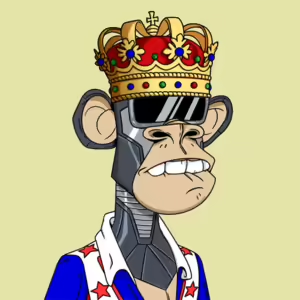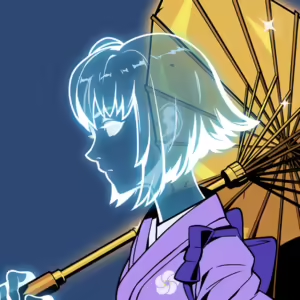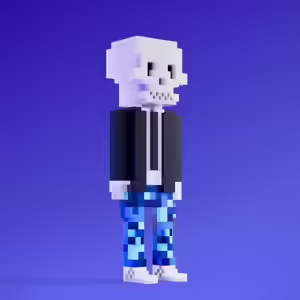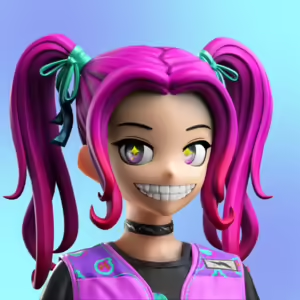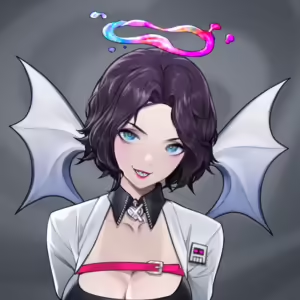NFT art is a creative activity based on the technology of non-fungible tokens. The use of NFT technology makes it possible to generate digital works (music, photographs, pictures, videos, animations) using a computer algorithm, assign them an individual, identifiable number or hash, by which you can verify their uniqueness.
NFT acts as a cryptographic certificate (digital identifier) confirming the originality of an art object. It is an irreplaceable unit of data (encrypted code), which, when selling a digital product, is transferred to a new user of the ecosystem. The blockchain accurately documents the sale/purchase of an art object using a smart contract.
What is the meaning of NFT ART?
Cryptographic art is essentially no different from the classical art that our society is accustomed to. This direction is characterized by well-established principles. For example, with the help of NFT Art, you can convey your own vision of the world to others and broadcast to them the unique ideas that arise in the head of a digital artist. As well as:
- reflect the interests of the majority of people;
- to form value orientations;
- give more aesthetics to ordinary things due to non-standard vision;
- cultivate a creative spirit.
The meaning of NFT-art is similar to classical art. However, there are fundamental differences that make cryptographic art a higher priority for creators than the classical industry. The main advantages of NFT-art:
- Guarantee of copyright protection (uniqueness of the work).
- Ease of buying or selling an art object.
- Promising market.
- Availability of monetization of digital goods for all authors without exception.
- The absence of intermediaries who wind up their own interest and set their own conditions. Actual direct sale of art objects to buyers.
- The chance of selling a digital asset at a more attractive price.
- NFT art opens up new opportunities for creators. The latter just need to understand blockchain technology and non-fungible tokens.
Digital art market until the emergence of NFT
The development of digital art began with the advent of the Internet and the Netscape browser. At first, creations were created on individual pages of sites. Then industries managed to conquer social networks and other platforms. A very powerful push was given by Instagram, where the main content became photographs, tracks, short videos and looped animations.
The next stage in the development of digital art was the appearance of smartphones. For them, they began to develop applications. Such an innovation made it possible to significantly speed up and increase the consumption of information in the form of images, music, video.
Accessibility of art objects has grown significantly. There was also an opportunity to sell own goods without an involved intermediary (directly to the buyer). A world of monetization has opened up for many creative personalities.
Today, digital art has become a huge trend in which large communities of musicians, artists, video editors, animation developers, video game creators are successfully realizing their potential.
However, until the advent of NFT art, it was difficult for creative individuals to protect their digital product from copying and uncontrolled distribution on networks. Internet pirates made a good living working for them.
In 2017, the Ethereum blockchain introduced the ERC 721 (non-fungible token) standard. This moment began to transform the digital art industry for the better. Creative individuals now have the opportunity to protect their own creations from uncontrolled copying. Now they can independently register ownership of digital goods, confirming their uniqueness and originality.
Advantages of using NFT in digital art industries
NFT technology positively influenced the market of digital art objects. Firstly, assets became more liquid. The industry became open – sales became easier and faster (literally in a split second). The amount of commissions from platforms and ecosystems is insignificant, and in comparison with classical art – miserable.
Secondly, NFT technology opens up new monetization opportunities for authors of digital works. They suggest bypassing art dealers (speculators, intermediaries). This allows you to save from 10-60% with each transaction. Today there are already different models of received income:
- royalty with each subsequent resale of the digital product (funds go directly to the author, who issued a token for his unique creation);
- royalty with the income of persons using a digital asset on the Internet (there are special platforms for tracking the fact of earning an author’s digital asset);
- right of limited NFT display (limits are established by region, time or place of display);
- earning per view (this is how online museums do, which wait for NFT for all their compositions and display them on the site, and each visitor pays for viewing).
The number of income options will increase in the near future. Also, the creators of the digital asset can become a participant of a huge community, where it is possible to share experiences and find buyers. Other advantages of using non-fungible tokens in digital art industries:
- ART-market works 24/7.
- You do not need to pay additional auction fees.
- The status of possession of a specific work is transmitted.
- Incomes are distributed transparently and lawfully.
- The fact of transfer of ownership of a work is registered in the blockchain. All participants of the ecosystem are aware of this transaction.
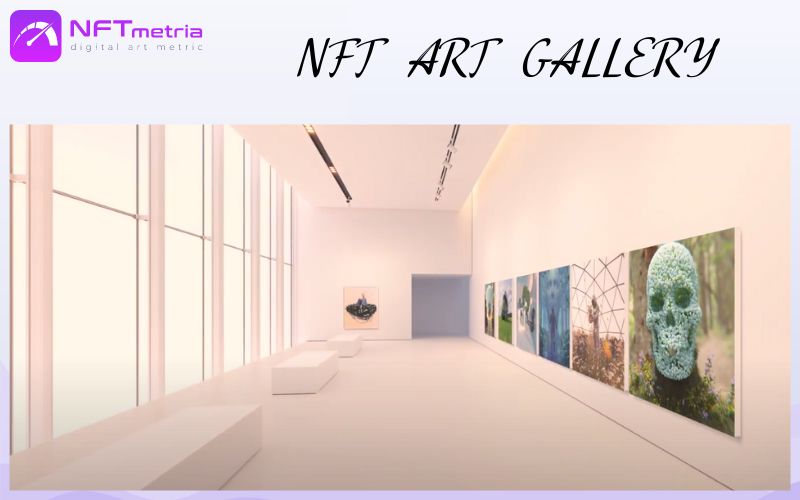
NFT art allows fractional ownership of a digital work (or works). In such a model, it is more profitable for investors to work. They invest less money in an art product. The saved funds are distributed among other works, also buying a certain share of ownership.
For example, an investor has $10,000. If he invests them in one work, he will wait longer for the buyer than if he buys part of the rights to several works for the same amount. Thus, the sale of digital art on the secondary art market becomes more open.
How can problems in the art industry be solved by NFT?
There were several problems in the art industry, but thanks to NFT technology, they were able to solve them. The first is the mandatory passage through the regulatory schemes of the state. The second is the payment of large commissions to auction houses and the fulfillment of their conditions. Rest:
- difficult process of work verification (copyright registration);
- frequent fraudulent activities related to the theft of digital art objects;
- long-term access to information that characterizes the asset (description provided by the author);
- no possibility of making a profit from further resale of the work.
- these problems were solved with the help of NFT technology. However, her entry into the art industry also comes with some drawbacks.
Cons of Digital NFT Art
This ART-market appeared recently. It has not yet really formed – there are no general rules and regulations that would simplify the interaction between buyers and sellers of digital goods.
Also, the regulations would allow to establish standards for works that are allowed to be sold to investors and collectors. Since now the market is oversaturated with simple works, the value of which is extremely doubtful.
Other disadvantages of the NFT of art are the insufficient number of qualified specialists, the lack of an established practice of evaluating works (standardization), the spontaneity of the market, a large influx of amateurs, and imperfect technical aspects of using tokens. Very often, the owners of unique works manage to make money due to newsbreaks or banal luck. This trend does not make it clear what works on the ART market and what does not.
How is the value of digital NFT art formed?
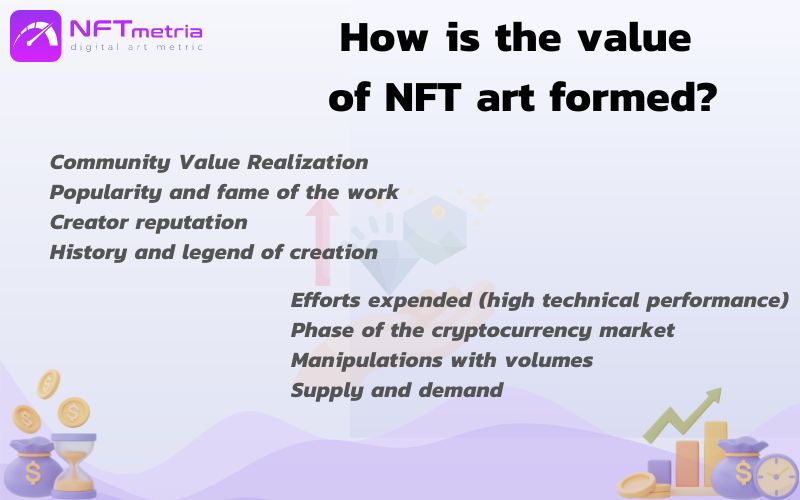
In this industry, there have already been cases of selling works for millions of US dollars. But how was their value formed? To add value, many crypto trading product owners pay journalists for frequent and positive mention of the work in the media. The more information there is, the higher the price tag will go up. But frequent mention is not the only criterion for the formation of the value of NFT art, there are also such:
- eminence of the author;
- the current level of interest in cryptocurrency in a particular region and around the world;
- assessment of other professionals within the larger community;
- job description.
The formation of the value of a digital product occurs according to the market principle. Some creative individuals set the initial cost based on the amount for which approximately similar works were sold. Then they adjust it if there is no demand.
How much does NFT art cost?
The price difference can be huge. For example, the company Injective Protocol sold the painting “Morons” by the artist Banksy, which cost $95,000. After the creation of the NFT product, it was burned. Thus, the work has become a truly unique digital object.
The Hermitage was also able to earn good money from five works that demonstrate the spirit of impressionism, modernism and the Renaissance. The total profit amounted to 32 million rubles. Another example is a digital portrait of a mythical demon from Hashmasks. Managed to bail out 650,000 dollars.
However, sales of NFT-protected digital assets are not always so profitable. There are cases of earning small amounts (in the range from 1 to 10 dollars). This once again confirms the spontaneity of the ART market.
How to create NFT art?
Programming skills are not required to develop your own NFT art. Also, deep knowledge in the field of cryptocurrency and blockchain is not required. It is important to be able to create unique works – music, video, pictures, animation. With well-developed creative skills, this will not be a problem.
Next, the finished digital product must be tokenized. To do this, one trading platform is selected from the many existing on the ART market. For example, Mintable, Rarible and OpenSea. Then you need to register and create a cryptocurrency wallet. It is needed to receive funds from the buyer of a digital product.
The wallet address will be the key information for logging into the account on the marketplace. Next, you should upload the work to the site and wait for tokenization.
How to buy/sell NFT-art?
After creating a crypto-wallet, ego replenishment, registrations on the marketplace and creation of the NFT-asset, it is possible to proceed to sale. There are three working mechanisms that implement the crypto-creation product:
- appointment of a fixed price;
- auction display (it lasts 24 hours after the first bid);
- receiving offers from the buyer (you can accept it or reject it).
The choice of a specific mechanism depends on the type of marketplace used and the level of marketing support of the project. If an artist has a large number of subscribers and followers, he can organize an auction and sell a product of crypto-creation to whoever offers the most money. For maximum benefit, you can promote your own digital asset in networks.
There is also a fourth mechanism for selling NFT-arts – by prior agreement with the collector/investor. This method is more suitable for experienced sellers.
Conclusion
NFT art has become really popular for several years. With its help, creative individuals can directly sell their works to collectors and investors, bypassing the intermediary. Buyers of digital work are guaranteed to receive a unique and completely original asset.
Potential in NFT ART blurred. On the one hand, major market players invest in token-protected digital goods (for example, Visa, Spark Capital, Andreessen Horowitz, Tiger Global), and on the other hand, it is a completely new market (it has many gray areas that fraudsters continue to use).
Also, there are other objective obstacles that do not allow NFT-art to spread on a large scale. For example, creators must pay the marketplace for the Cekanku token. This is a mandatory payment that does not depend on the future fate of the crypto-creation product (it will sell or not).
Another example of an objective obstacle is a large ecological footprint. According to the calculations of some experts, one two-second NFT transaction requires the same amount of energy as a standard art gallery consumes for 2 years of operation.
When these problems are solved, we will see a real breakthrough in the ART market. Then investments in NFTs become commonplace.

